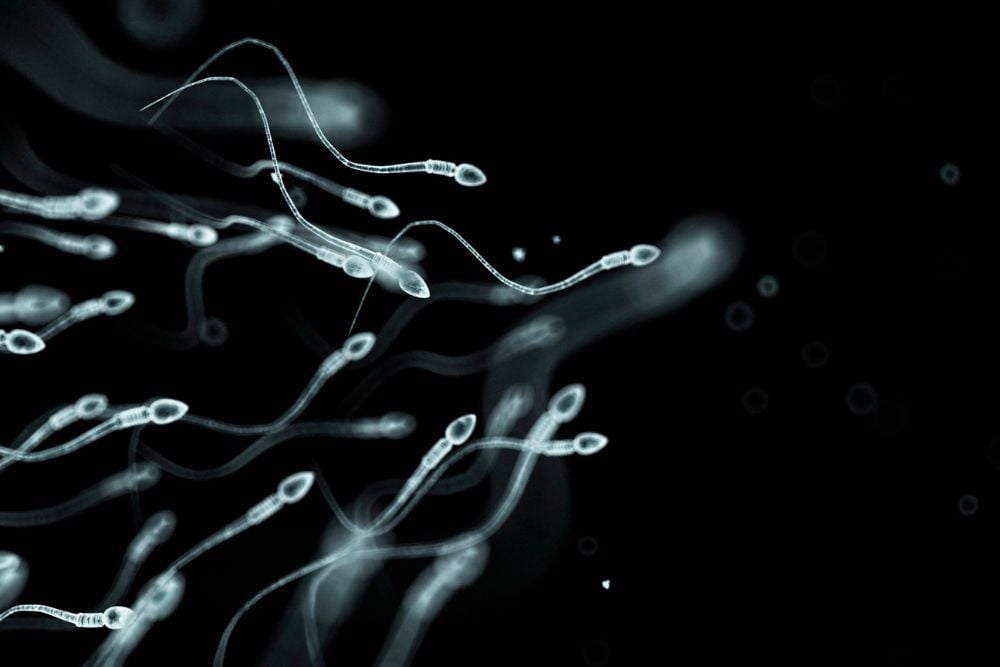Sperm Washing & IUI: How They Work Together

The process of intrauterine insemination (IUI) may be less complex than other fertility treatments, like in vitro fertilization (IVF). However, to succeed, every step must be performed correctly, and all components must be of the highest quality, including sperm. Before IUI, a process called sperm washing must be performed, separating highly active, healthy sperm from lower-quality sperm and other materials. This dramatically reduces the chances of harmful reactions affecting a woman’s uterus, while increasing the likelihood of a healthy pregnancy.
The Reasons Why Sperm Washing is Necessary
Essential for both IUI and IVF, sperm washing eliminates unnecessary, potentially dangerous elements, like seminal plasma, a fluid produced by secretions of sexual glands, the testis, and the epididymis (i.e., the tube storing and carrying sperm). Removing these chemicals purifies semen, helping to prevent harmful reactions such as severe cramps in the uteruses of women undergoing IUI. Using only small, highly concentrated amounts of healthy sperm also improves its fertilizing capacity, boosting pregnancy success. Sperm washing is highly recommended for patients with immune system disorders, unexplained infertility, or male-factor infertility, like low sperm count.
Sperm Washing: A Procedural Overview and Techniques
At the Fertility Center of California, we perform three sperm-washing techniques. Before IUI, a single specimen can be washed, allowing you to determine the most effective technique. While washed specimens can be safely stored for a couple of hours before insemination, for any delays, we provide secure storage in a special medium for up to 6 hours.
Basic Sperm Wash
With this technique, typically taking 20-40 minutes, a sperm wash solution containing antibiotics and protein supplements is added to the ejaculate. After repeated centrifugation, the seminal fluid is removed and the concentrated sperm cells are ready for insemination.
Premium Wash
This technique, taking about an hour, helps assess male factor fertility. It separates and purifies fresh or frozen sperm to get a specimen with at least 90% motility (movement), depending on initial quality. Different concentrations of isolate (extremely dense fluid) are layered in a test tube, with the heaviest at the bottom. The sample is placed on the top layer and centrifuged, with only motile sperm getting through to the bottom layer, where they’re concentrated. The poor-quality sperm and debris remain in the top layers.
Swim-Up Technique
This technique, taking about 2 hours, also obtains a sperm sample with at least 90% motility. However, it uses sperm self-migration, in which a layer of fresh liquid or gel media is gently added to a sample. Most motile sperm swim out and upward into the added media, where they’re collected and used for insemination. The swim-up technique is not recommended for men with oligozoospermia (low sperm counts), poorly motile sperm, or male-factor infertility, as their sperm may have trouble swimming into the medium.
Before sperm collection, male patients should practice sexual abstinence for at least two, but not more than five days. Additionally, if allergic to any antibiotics, tell your urologist before sperm washing.
Explore Sperm Washing Benefits for IUI Procedures
Sperm washing is an integral stage in IUI, allowing only the highest-quality sperm to be utilized. Should you be interested in sperm washing, or for general fertility treatment questions, we invite you to schedule an appointment with our fertility specialists today.






